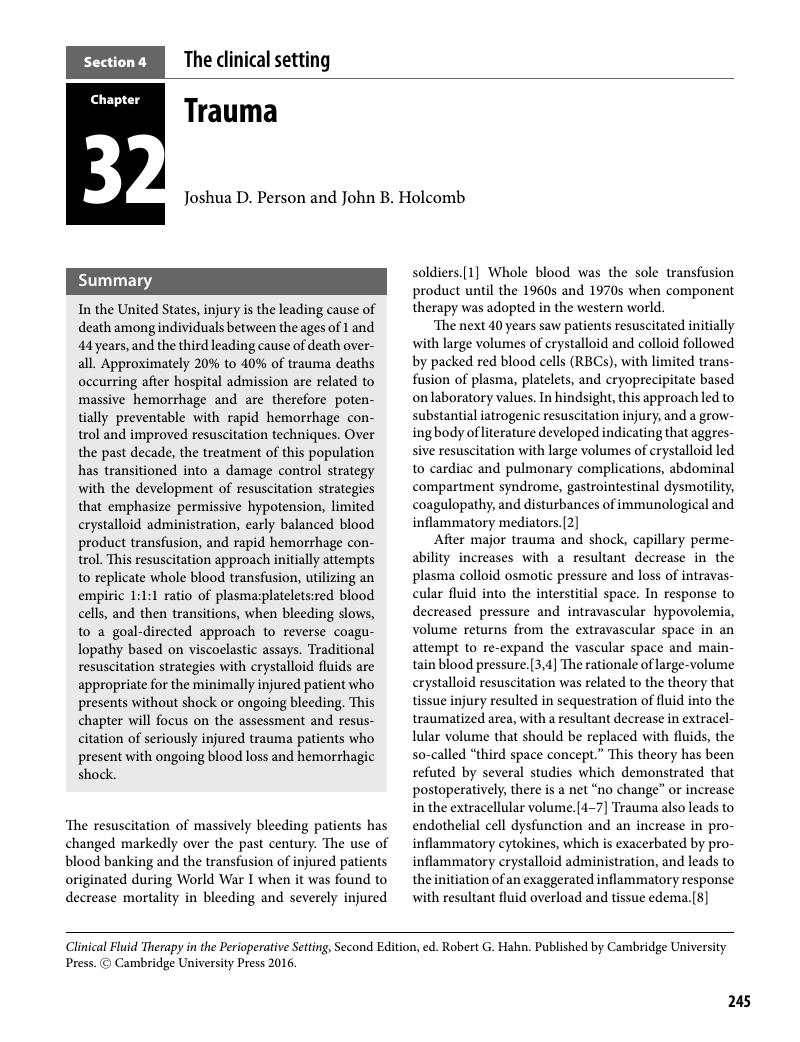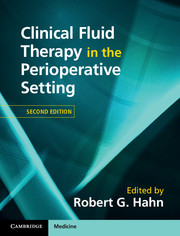Book contents
- Clinical Fluid Therapy in the Perioperative SettingSecond Edition
- Clinical Fluid Therapy in the Perioperative Setting
- Copyright page
- Contents
- Contributors
- Preface
- Overview of chapter summaries
- Section 1 The fluids
- Section 2 Basic science
- Section 3 Techniques
- Section 4 The clinical setting
- Chapter 19 Spinal anesthesia
- Chapter 20 Day surgery
- Chapter 21 Abdominal surgery
- Chapter 22 Cardiac surgery
- Chapter 23 Pediatrics
- Chapter 24 Obstetric, pulmonary, and geriatric surgery
- Chapter 25 Transplantations
- Chapter 26 Neurosurgery
- Chapter 27 Intensive care
- Chapter 28 Severe sepsis and septic shock
- Chapter 29 Hypovolemic shock
- Chapter 30 Uncontrolled hemorrhage
- Chapter 31 Burns
- Chapter 32 Trauma
- Chapter 33 Absorption of irrigating fluid
- Chapter 34 Adverse effects of infusion fluids
- Index
- References
Chapter 32 - Trauma
from Section 4 - The clinical setting
Published online by Cambridge University Press: 05 June 2016
- Clinical Fluid Therapy in the Perioperative SettingSecond Edition
- Clinical Fluid Therapy in the Perioperative Setting
- Copyright page
- Contents
- Contributors
- Preface
- Overview of chapter summaries
- Section 1 The fluids
- Section 2 Basic science
- Section 3 Techniques
- Section 4 The clinical setting
- Chapter 19 Spinal anesthesia
- Chapter 20 Day surgery
- Chapter 21 Abdominal surgery
- Chapter 22 Cardiac surgery
- Chapter 23 Pediatrics
- Chapter 24 Obstetric, pulmonary, and geriatric surgery
- Chapter 25 Transplantations
- Chapter 26 Neurosurgery
- Chapter 27 Intensive care
- Chapter 28 Severe sepsis and septic shock
- Chapter 29 Hypovolemic shock
- Chapter 30 Uncontrolled hemorrhage
- Chapter 31 Burns
- Chapter 32 Trauma
- Chapter 33 Absorption of irrigating fluid
- Chapter 34 Adverse effects of infusion fluids
- Index
- References
Summary

- Type
- Chapter
- Information
- Clinical Fluid Therapy in the Perioperative Setting , pp. 245 - 252Publisher: Cambridge University PressPrint publication year: 2016



